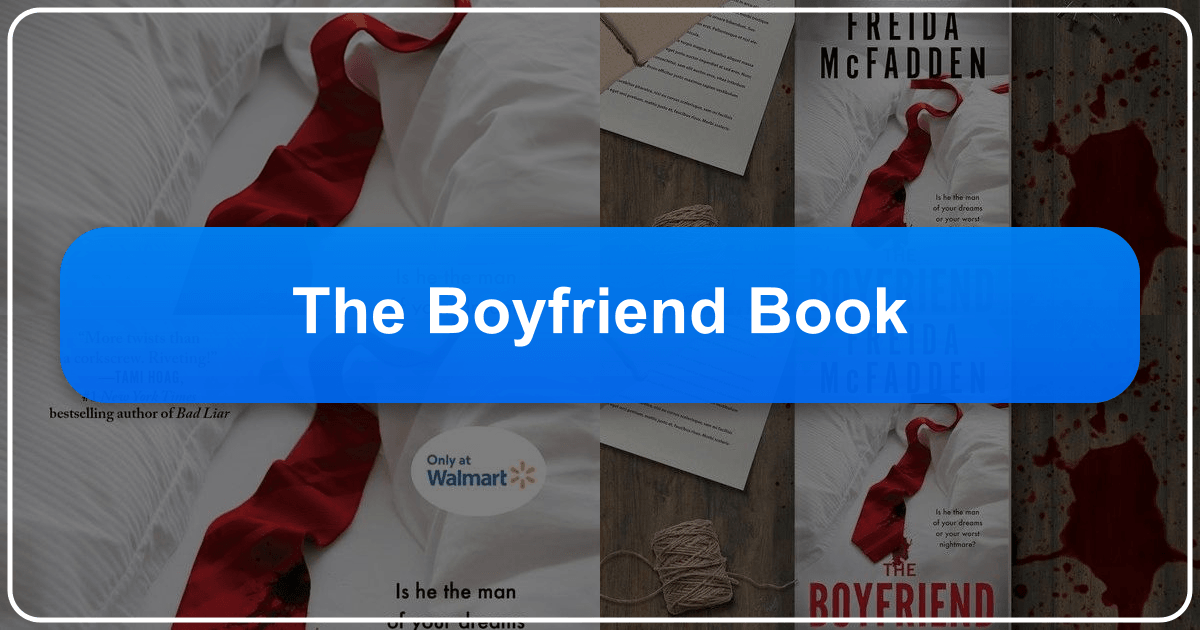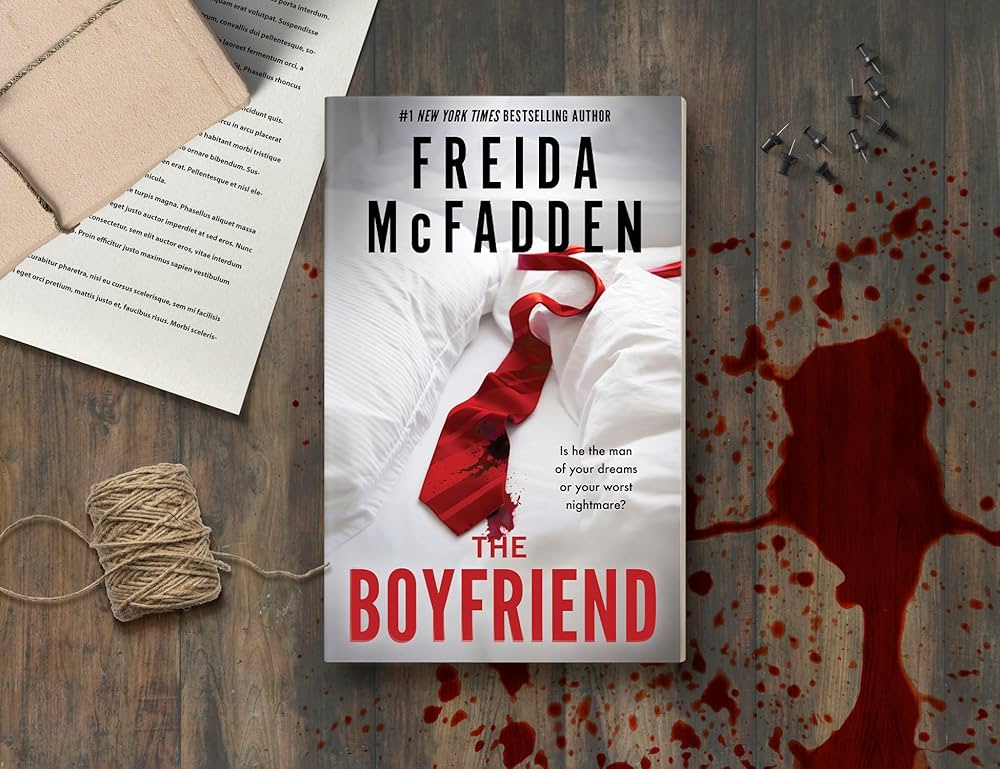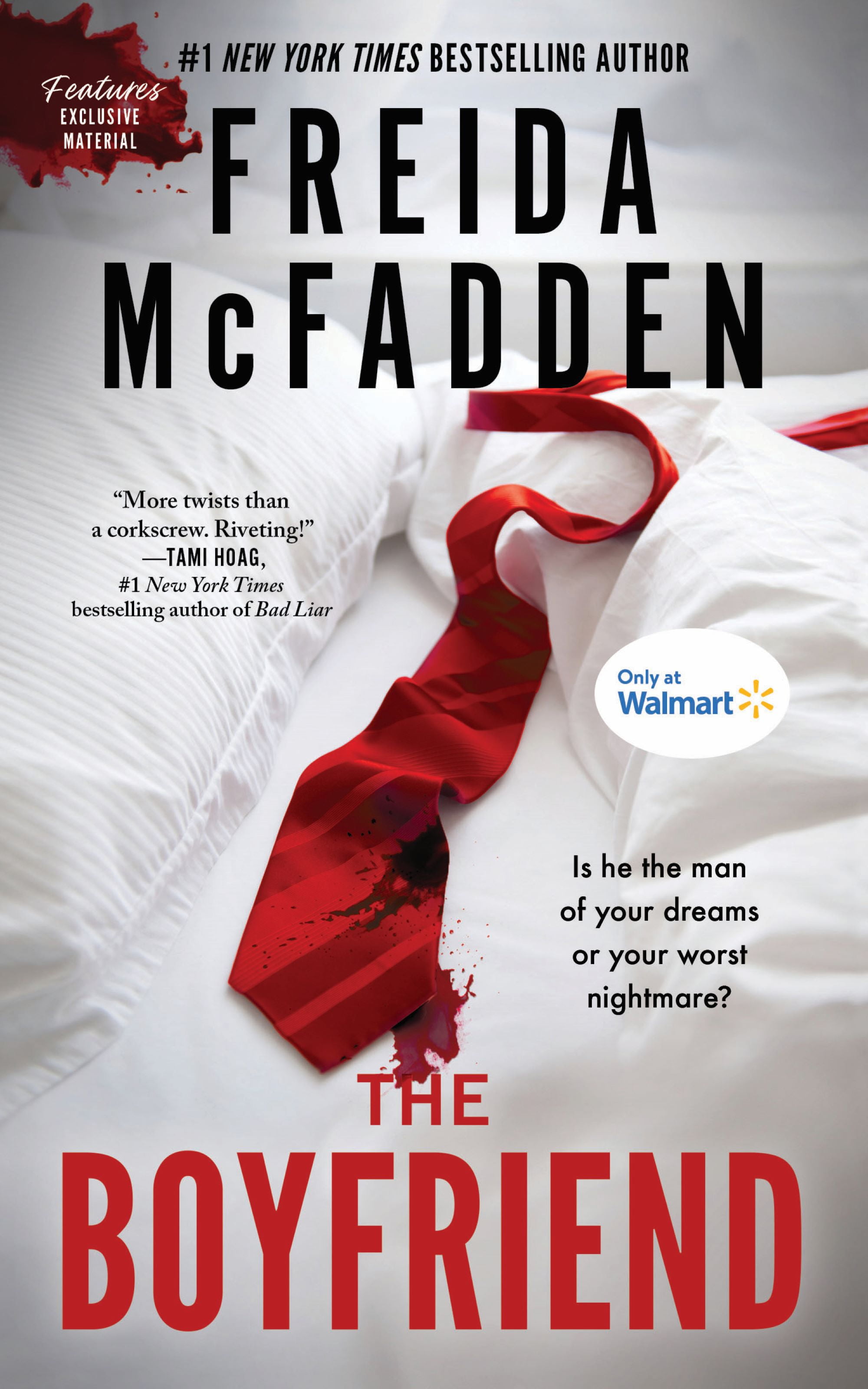The Boyfriend Book: A Deep Dive into Freida McFadden's Thriller

Freida McFadden’s “The Boyfriend” has garnered significant attention, sparking numerous discussions and reviews across platforms like Goodreads and Amazon. This analysis delves into the novel, examining its reception, plot points, character development, and broader cultural impact within the context of thriller literature. We will structure our review around key aspects commonly used to analyze books: Genres, Classics, Bestsellers, New Releases, Book Reviews, Authors, Reading and Learning, Libraries and Cultural Impact.
Genre and Reception: A Polarizing Thriller

“The Boyfriend” falls squarely within the psychological thriller genre, a category known for its suspenseful narratives, unreliable narrators, and unexpected twists. However, the book’s reception has been far from unanimous. While some readers praise McFadden’s ability to create a page-turner that keeps them hooked until the very end, others criticize the frustratingly unrealistic behavior of the main character, Sydney Shaw.
Goodreads reviews reveal a significant divide in opinion. Ratings range from glowing 3.5 stars to scathing 1-star reviews, reflecting a polarized response to the novel’s plot and character development. Many reviewers cite the “just one more chapter” sensation, a testament to McFadden’s engaging writing style. However, the overwhelming criticism centers on Sydney Shaw, the female protagonist, who is repeatedly described as “obnoxiously self-absorbed,” “borderline annoying,” and shockingly “dumb.” Her consistent failure to recognize obvious red flags and prioritize her own dating life over the investigation into her best friend’s murder fuels much of the negative feedback. The common thread in these critiques is that Sydney’s actions often contradict common sense and undermine the suspense.
Amazon reviews share similar sentiments, with several reviewers pointing to the uneven pacing. The initial half of the book is criticized for its focus on seemingly irrelevant details, leaving some readers to feel as if the plot remains stagnant until the 50% mark.

Authorial Style and Influences: McFadden’s Trademark
Freida McFadden’s writing style is often lauded for its captivating nature. Her short, concise chapters are designed to create a sense of urgency and keep readers constantly engaged. This strategy, clearly evidenced in “The Boyfriend”, contributes to the “unputdownable” aspect many readers appreciate, although others perceive it as a mere tactic to mask plot weaknesses or underdeveloped characters. This could be a conscious stylistic choice for quick gratification or possibly the result of a rushed writing process.
It is difficult to pinpoint specific literary influences on McFadden’s work from the available information. However, the dual-timeline narrative and the blend of mystery and suspense elements found in “The Boyfriend” are consistent tropes within the thriller and crime fiction subgenres. The novel’s themes of obsession, betrayal, and the search for truth echo those found in numerous other psychological thrillers.

Plot Summary and Analysis: Twists and Turns
“The Boyfriend” employs a dual-perspective narrative, shifting between the present-day experiences of Sydney Shaw and the past experiences of Tom Brewer. Sydney’s storyline follows her frustrating journey through the world of online dating, where she encounters a string of undesirable dates until she meets a seemingly perfect man. Simultaneously, Tom’s past is revealed through a series of flashbacks. These flashbacks create a parallel narrative of teenage infatuation and obsession, with a strong suggestion of dark and potentially criminal undertones. This past narrative is generally deemed much more interesting and suspenseful by readers.
The plot hinges on the interconnectedness of Sydney’s present-day anxieties and Tom’s past actions, building suspense through carefully placed hints and red herrings. The central mystery revolves around the murders of several young women targeted by their dates, creating a sense of increasing danger for Sydney. While many reviewers state that they could see most of the plot twists coming, they praise the one significant plot twist involving the identity of the killer. The twist is generally praised as unexpected and shocking, although some find the resolution to the plot too abrupt or underwhelming, lacking the satisfying closure often associated with this genre. The epilogue of “The Boyfriend” is frequently highlighted as a significant disappointment and as a waste of the narrative momentum built up to this point.
The past timeline, focusing on Tom’s relationship with Daisy Driscoll, functions as a significant element of suspense, raising questions about Tom’s character and the eventual link to the present day. While many find this timeline much more gripping than Sydney’s narrative, the characters themselves lack depth. Tom’s psychotic tendencies are deemed overly theatrical instead of subtly introduced.
Character Development: The Weak Link?
As extensively mentioned in the Goodreads and Amazon reviews, the character development in “The Boyfriend” is a point of considerable contention. Sydney Shaw’s lack of self-awareness and consistently poor judgment draw significant criticism. While the intention may have been to create an unreliable narrator, many readers find Sydney’s actions to be so consistently illogical and lacking in common sense, leading to frustration and disbelief. The failure of Sydney to progress or learn from her experiences is frequently cited. The murder of her best friend is a pivotal plot point, however, many reviewers felt that this event was rather quickly dismissed by Sydney and did not contribute to her character development, instead being overshadowed by her romantic interests.
In contrast, Tom Brewer, while flawed, receives more positive feedback, largely because he exhibits more relatable qualities than Sydney does. Many readers perceived him to be a predictable character, and thus found the true nature of his character to be lacking in impact.
Reading Habits and Educational Value: A Quick Escape?
“The Boyfriend,” despite its polarizing reception, serves as a fast-paced read, a feature commonly associated with McFadden’s works. The book’s accessible language and concise chapters encourage rapid consumption, making it a suitable choice for those looking for a quick, engaging thriller.
In terms of educational value, “The Boyfriend” offers limited insights. While it touches on themes of obsession, jealousy, and the dangers of online dating, it does not explicitly delve into these themes in a deeply analytical manner, instead choosing to remain within the confines of the typical thriller narrative.
Libraries and Cultural Impact: The Broader Context
The book’s availability in various libraries, both physical and digital, underscores its accessibility and widespread popularity. The relative ease with which it is available broadens its reach to a wide range of readers.
Its cultural impact, as judged by its Goodreads and Amazon reviews, mainly revolves around its participation in online book communities. The diverse opinions reflected in the many reviews indicate its engagement with online literary communities that focus on thriller and suspense literature. While it is unlikely to be considered a classic of the genre, its significant number of reviews indicates that it has found a place within contemporary thriller literature.
Conclusion: A Mixed Bag
“The Boyfriend” demonstrates Freida McFadden’s talent for crafting a compelling, fast-paced thriller. However, the inconsistent character development, particularly the frustrating portrayal of Sydney Shaw, significantly detracts from its overall impact for many readers. While the plot and twists and turns, particularly the narrative structure of two timelines, provide a sense of suspense, the overall experience is a mixed bag, leaving some readers deeply satisfied and others profoundly disappointed. The book’s success in maintaining a high level of engagement throughout, as evidenced by many reviews, can be attributed largely to the author’s stylistic choices. However, this engagement may come at the cost of depth and character development, thus leaving its lasting impression to be determined by individual reader preferences.